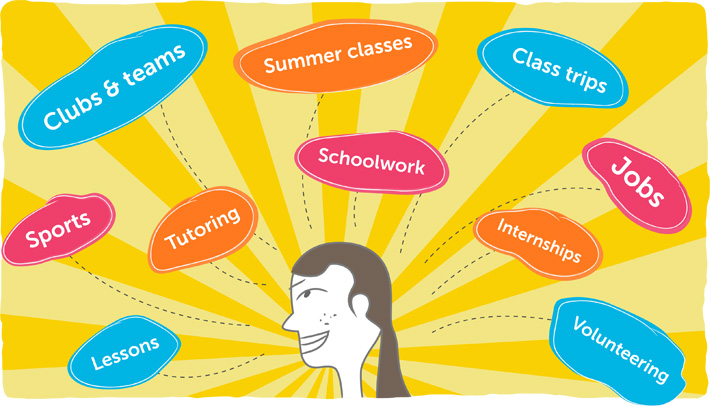How important are extracurriculars? Which ones are the right ones? How many should I be involved in? We hear these questions all the time from parents or students who worry whether they are doing the “right” things to be attractive to colleges.
We recommend balance. Of course it’s important to think about how students’ activities will affect their futures. However, don’t let the concept of resume-building for college be the sole reason for getting involved (or not getting involved). Colleges can tell when students pick up activities to bulk up their application.
Instead, students should join activities because they’re interested and want to further their personal aspirations. More than anything, colleges like to see that students are fostering their individuality and pursuing their unique interests. Choosing extracurriculars based on inner motivation makes picking the “right” activities much easier. Instead of trying to check off boxes for colleges, students can look inward to determine what is right for them.
How to find the right activities
As freshmen and sophomores, we encourage students to try new things. The beginning of high school is a great time to investigate the new options open to them and to discover what they may want to be involved in long-term.
Evaluate past involvement
Use the transition to high school to decide which activities to continue with. Ditch the activities that don’t seem worthwhile or aren’t enjoyable anymore. This will make room for fresh, engaging activities that have the potential to become life-long interests.
Don’t be afraid to sample!
Audition for a part in the play, sign up for robotics club, try out for the ping pong team. Students don’t have to commit to everything they try. Go to a couple meetings and see how it goes. Who knows! A new passion may be just around the corner.
Connect with teachers and other students
Consulting with an involved teacher or chatting with an upperclassman can help students unearth activities that would be a good fit for them. Which clubs are run really well? What’s available for students who are interested in biology, in debate, in music, in renaissance art? A little bit of inside intel can go a long way in hooking students up with the right activities.
As juniors and seniors, we encourage our students to find focus in the activities they do. By putting their energies into purposefully building the skills they want to use beyond high school, students are demonstrating their maturity and their commitment.
The concept of the “well-rounded” student is out and the “angular” student is in. An angular student is involved in fewer activities but involved in them deeply. Students who are just starting out in high school are looking for their “angle” – the activity that they’re really passionate about. It can be a challenge to find that angle but with some investigative work in the beginning, students will be well on their way to finding direction in the things they choose to do.





